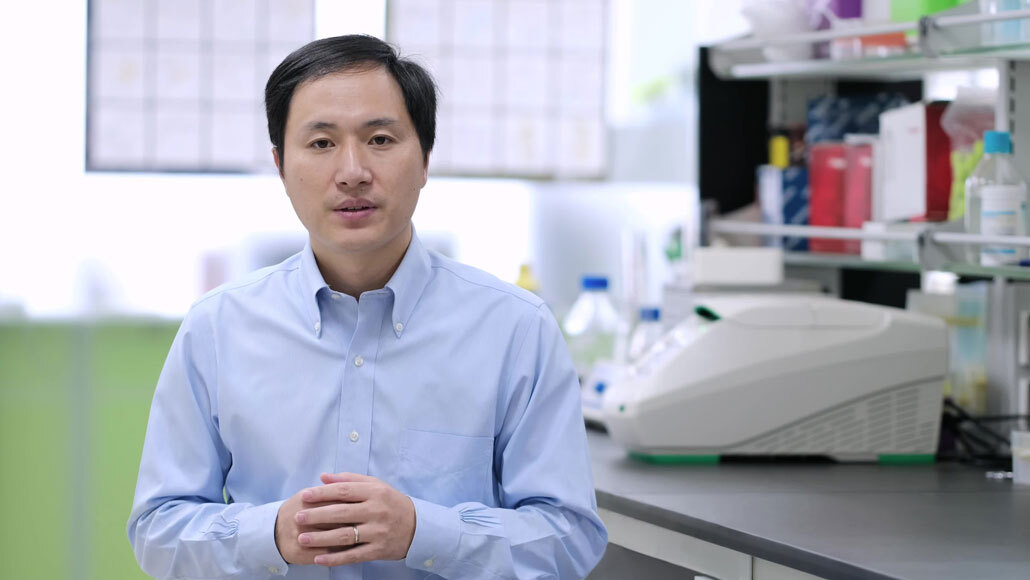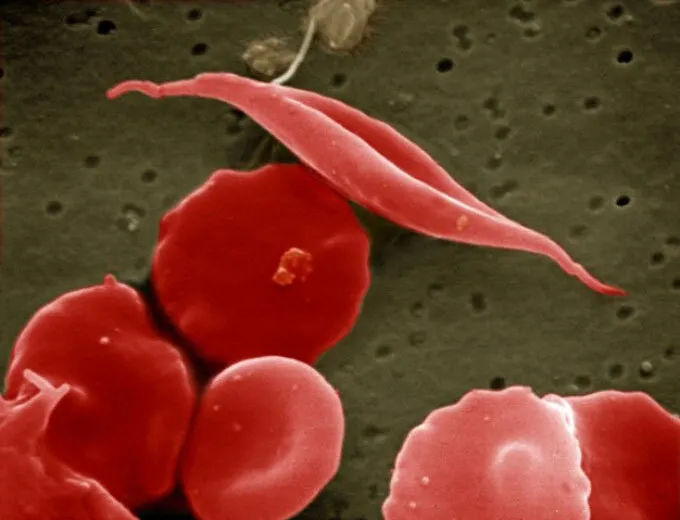Strict new guidelines lay out a path to heritable human gene editing
But scientists say making changes in DNA that can be passed on isn’t yet safe and effective

In 2018, Jiankui He (pictured) announced that he had edited genes in embryos to create two baby girls, going against a general consensus that the technology isn’t ready for such a step.
The He Lab/Wikimedia Commons (CC BY 3.0)
- More than 2 years ago
Gene editing to make heritable changes in human DNA isn’t yet safe and effective enough to make gene-edited babies, an international scientific commission says. But in a Sept. 3 report, the group laid out a road map for rolling out heritable gene editing should society decide that kind of DNA alteration is acceptable.
The International Commission on the Clinical Use of Human Germline Genome Editing formed after a Chinese scientist announced in 2018 that he had created two gene-edited baby girls, sparking outrage (SN: 11/27/18). In its first official weigh-in on the issue, the group lays out strict scientific criteria that would need to be met before heritable gene editing could be tried clinically. If countries can’t ensure that all of those criteria are met, heritable gene editing shouldn’t be approved, the commissioners say.
Still, some critics charge that even presenting such criteria is premature. The science should wait until society decides whether to allow gene editing that can affect future generations, they say.
Gene editing involves changing a single DNA letter, or base, in a gene. Many different technologies, including CRISPR/Cas9, base editors (SN: 3/5/19) and engineered proteins called zinc finger nucleases and TALENs (SN: 11/6/15), can be used to make edits at precise locations in DNA. Although accuracy of editing has improved, there are still concerns that gene editors will make unwanted, “off-target” changes elsewhere in DNA that might cause harm. Technologies to ensure every cell in an embryo contains the desired change — and only that change — also still need work, the commission says.
“It’s accurate and efficient enough to do in animals,” but editing in human embryos requires much more precision, Haoyi Wang, a geneticist and molecular and stem cell biologist at the Chinese Academy of Sciences’ Institute of Zoology in Beijing said September 3 during a webinar to discuss the report.
Scientists are already testing CRISPR gene editing to correct the inherited blood disorders sickle-cell anemia and beta-thalassemia and an inherited form of blindness called Leber congenital amaurosis 10 in adults (SN: 8/14/19). Those edits are in adult cells and can’t be carried into future generations.

But altering DNA in the human germ line — embryos, eggs, sperm or the cells that give rise to them — would create changes that could be passed on to future generations. Many people, including scientists, are concerned that rogue scientists wouldn’t stop at editing out diseases and would create “designer babies” with enhanced athletic ability, intelligence or other desirable traits.
The commission proposes that human germline editing should be restricted to serious genetic diseases caused by specific versions of single genes that are virtually guaranteed to cause the disease if inherited. Such disorders include Duchenne muscular dystrophy, Tay-Sachs disease and cystic fibrosis. Children who inherit these disorders die young or have serious medical problems.
The commission also specified that before human germline editing is considered, no other way of ensuring a couple can produce embryos without the disease-causing genetic variants should be available. That essentially winnows the eligible list down to couples in which both parents have two copies of recessive disease-causing variants, or couples in which one parent has two copies of mutations that cause a dominant genetic disorder, such as Huntington’s disease, which results from inheriting a single copy of a faulty gene.
Perhaps 20 families around the world would meet these strict criteria, Michèle Ramsay, a human geneticist at the University of the Witwatersrand in Johannesburg, said September 3 during a news briefing.
So the commission also decided that some families with less serious disorders, but who have little chance of producing embryos without the disease-causing variants, would also be eligible. One example is familial hypercholesterolemia, an inherited form of high cholesterol which leads to early heart disease and death. That and other disorders are carried by a high proportion of people in parts of the world where marriage between cousins is common. Gene editing might be an option when 25 percent or fewer of a couple’s embryos would be free of the disease-causing mutation.
Even then, such couples must already have attempted in vitro fertilization with a technique called preimplantation genetic testing to screen out embryos that carry the faulty version of the gene. “We’re not thinking there are going to be a lot of people” that are qualified to take part in the initial research, Ramsay said. “There are no floodgates that are going to be opened.” If the technology is both safe and effective in those few families, it might then be considered for other conditions.
The commission recommends more research on using stem cells to produce eggs and sperm in lab dishes, which could then be used to create embryos that don’t carry genetic diseases. Such research has been done in mice (SN: 5/18/17), but is in its infancy with human cells, said Richard Lifton, a human geneticist at the Rockefeller University in New York City.
Heading off hubris was one of the commission’s main concerns, Lifton said. The report also recommends establishing an international scientific advisory board to evaluate the state of the technology and consult on applications to do such heritable or germline editing.

Trustworthy journalism comes at a price.
Scientists and journalists share a core belief in questioning, observing and verifying to reach the truth. Science News reports on crucial research and discovery across science disciplines. We need your financial support to make it happen – every contribution makes a difference.
An organization similar to the World Anti-Doping Agency, which oversees use of performance-enhancing drugs in sports, might be set up to keep an eye out for unauthorized gene editing, Lifton suggested. Reining in rogue scientists would also require setting up a way for whistleblowers to report possible unapproved research.
The report is “appropriately cautious and thoughtful and written with a clear appreciation for what’s been going on in the world,” said Kyle Orwig, an infertility researcher at the University of Pittsburgh who was not involved with the commission. “It’s a bit aspirational because it raises questions about whether individual countries are willing to submit to international oversight,” he added.
What’s more, setting up global governance to prevent scientists from going rogue may not be as effective as laying out a clear moratorium or ban, says Katie Hasson, program director for genetic justice at the nonprofit Center for Genetics and Society, based in Berkeley, Calif.
Whether to allow changes to DNA that can be inherited by future generations is a decision that affects the whole human species, and should be an international consensus rather than a single country’s decision, Wang said.
This report handled only the scientific aspects of gene editing. An upcoming report from the World Health Organization will tackle ethical and societal issues surrounding gene editing.
Hashing out how to do germline editing before society has indicated its desire to do so is backward, Hasson says. “The question has been and still is whether we want to move forward with editing the genes and traits of future generations,” she says. “To skip ahead to how . . . seems like getting ahead of things a bit.”
There is still a need for broad societal conversations about the technology. More than 70 countries already have laws that prohibit germline editing, and a moratorium and other laws might effectively stop the technology from moving forward, Hasson says. “There’s no reason this should be inevitable. Laying out this path in advance makes it seem more inevitable and pushes us toward that conclusion.”






